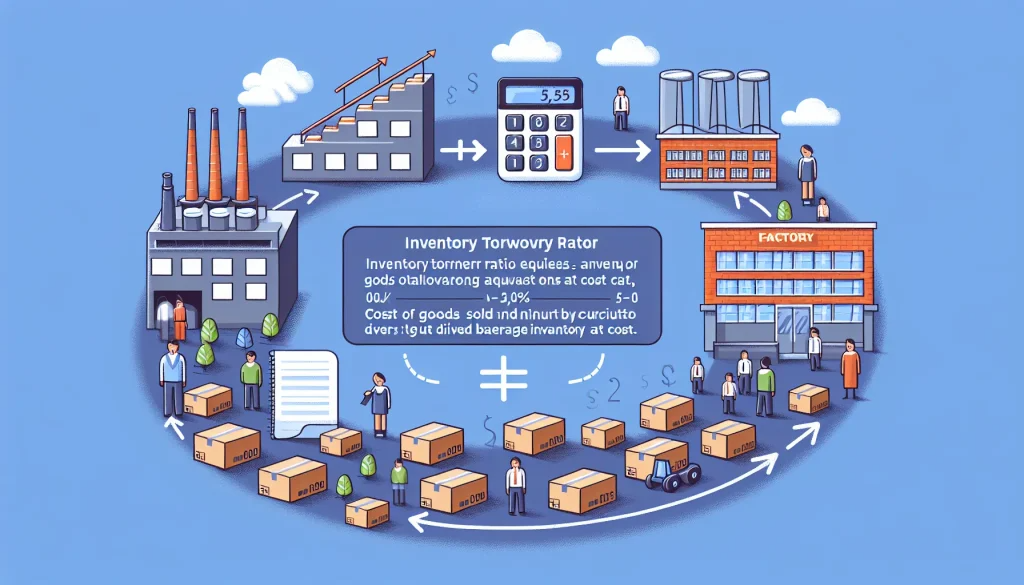Effective warehouse management is critical for the success of any e-commerce business. The inventory turnover ratio is a key metric that plays a significant role in this process. This ratio directly impacts warehouse operations, influencing inventory management, space utilization, and order fulfillment decisions. Let’s dive into the details by addressing common questions surrounding this topic.
Understanding Average Inventory Turnover in E-commerce
The inventory turnover ratio measures how often a business sells and replaces its inventory over a given period. In the e-commerce industry, the average inventory turnover ratio typically ranges from 4 to 6 times per year, depending on the product category. High-demand products, such as fashion items or consumer electronics, may see turnover rates closer to 8 or more, while slower-moving goods may fall below 3.
Maintaining a healthy inventory turnover ratio is crucial for efficient warehouse management. A low ratio indicates overstocking, leading to higher storage costs and potential obsolescence. Conversely, a high ratio may result in stockouts, delayed orders, and dissatisfied customers.
The Impact of E-commerce on Inventory Practices
E-commerce has revolutionized inventory management in several ways:
- Higher Complexity: With customers expecting fast deliveries and a wide variety of products, e-commerce businesses must manage inventory across multiple locations and channels.
- Demand for Real-Time Tracking: Accurate, real-time inventory tracking is essential to meet customer expectations and avoid overselling.
- Seasonal Peaks: E-commerce experiences sharp fluctuations during holidays and sales events, requiring warehouses to scale operations rapidly.
- Smaller Order Sizes: Unlike traditional wholesale operations, e-commerce warehouses often handle individual orders, necessitating more detailed picking, packing, and shipping processes.
Exploring Warehousing Solutions for Efficiency
Warehousing solutions are strategies, tools, and technologies designed to optimize storage and inventory management processes. These solutions help businesses address common challenges and improve operational efficiency. Key warehousing solutions include:
- Third-Party Logistics (3PL): Partnering with 3PL providers allows e-commerce businesses to outsource storage, order fulfillment, and shipping.
- Warehouse Management Systems (WMS): Advanced WMS software enables real-time inventory tracking, order processing, and warehouse optimization.
- Automated Storage and Retrieval Systems (AS/RS): These systems use robotics to automate inventory storage and retrieval, increasing speed and accuracy.
- Cross-Docking: Reducing storage needs by immediately transferring inbound goods to outbound shipments.
Managing Inventory Effectively for Online Sales
Managing inventory for online sales requires a strategic approach to ensure efficiency and customer satisfaction. Here are some best practices:
- Implement Forecasting Tools: Use data-driven tools to predict demand trends and adjust inventory levels accordingly.
- Adopt Just-In-Time (JIT) Inventory: Minimize storage costs by ordering inventory only as needed to fulfill customer demand.
- Utilize Warehousing Solutions: Invest in a robust WMS to track stock levels, manage reorders, and avoid stockouts.
- Diversify Storage Locations: Distribute inventory across multiple warehouses to reduce delivery times and shipping costs.
- Leverage Dropshipping: For certain products, dropshipping should be considered to eliminate the need for storage altogether.
Why Inventory Turnover Matters in Warehouse Management
A balanced inventory turnover ratio ensures that your warehouse operates efficiently by maintaining optimal stock levels. It reduces storage costs, prevents obsolete inventory, and supports faster order fulfillment. By understanding the interplay between inventory turnover and warehouse management, e-commerce businesses can achieve sustainable growth while meeting customer expectations.
Final Beliefs
Inventory turnover ratio is more than just a number; it’s a key driver of effective warehouse management. Businesses can thrive in today’s competitive online market by leveraging warehousing solutions, staying agile with e-commerce inventory management, and focusing on efficient operations. Prioritizing these strategies will improve inventory management and enhance overall customer satisfaction.
Connect with Cubework
Ready to rethink your warehousing strategy? Look at flexible solutions that fit your business needs, which are the steps to success. Contact us at 888-599-7809 or by email at info@cubework.com. Visit our location page to explore more of our facilities.

Leave a Reply